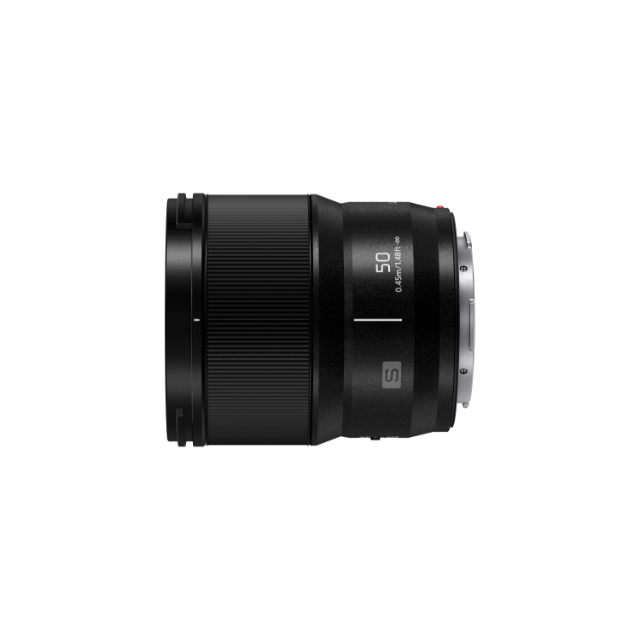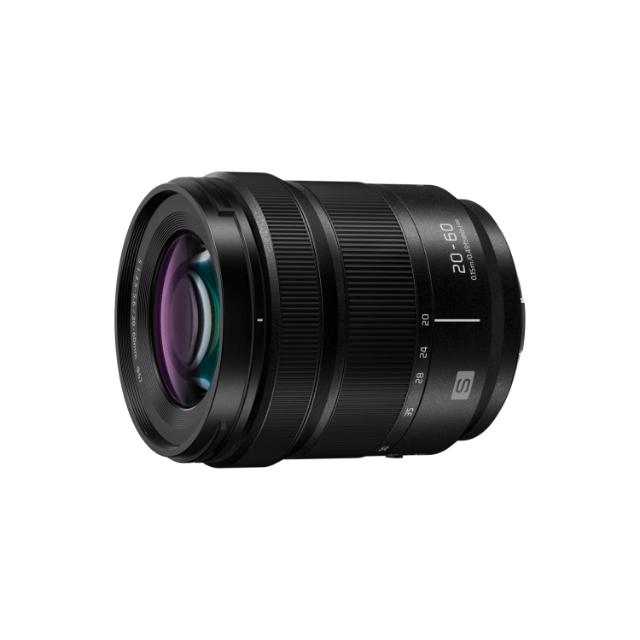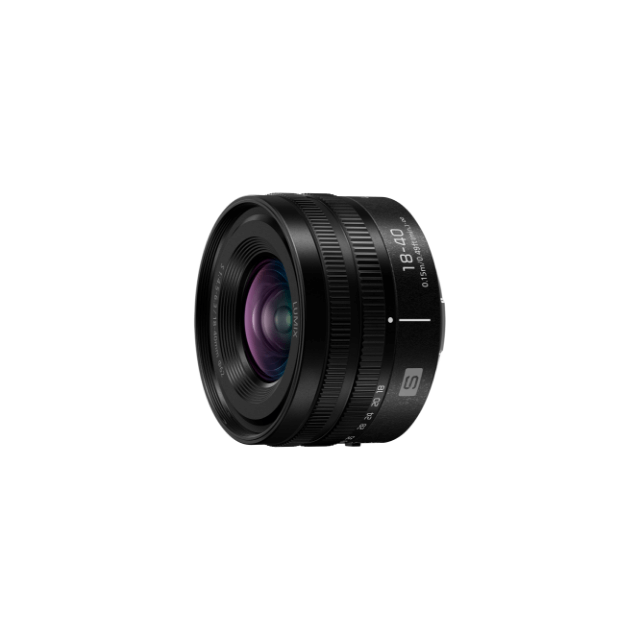
This is the Optical Design Department- Ninth Edition [LUMIX S 24-105 mm F4 MACRO OIS]
Hello, everyone.
"This is the Optical Design Department" is a series that takes an in-depth look at LUMIX lenses.
In "This is the Optical Design Department", we in the Optical Design Department will explain the lens designs and their features, as well as the dedication and philosophy behind our work that you will not find in our catalogues or websites.
For those who are considering purchasing a camera lens, we encourage you to learn more about the design philosophy behind LUMIX lenses, and for those who already own a LUMIX lens, we hope you enjoy learning about the unparalleled attention to detail and thought that goes into the superb image quality you enjoy in your photography.
This is an article that explains various lenses written by developers full of technical jargon.
By reading this, you too will be peering into the depths of enthusiasm for lens collecting.
The ninth article is about LUMIX S 24-105 mm F4 MACRO O.I.S., explained by Kudo.
Introduction
When we released our first two mirrorless interchangeable lens cameras with a full-frame 35 mm image sensor, the DC-S1R and DC-S1, in 2019, we also released three lenses as the first phase of our lens lineup: the LUMIX S 24-105 mm F4 MACRO O.I.S., the LUMIX S PRO 70-200 mm F4 O.I.S., and the LUMIX S PRO 50 mm F1.4.
Of the three lenses, this article will focus on the LUMIX S 24-105mm F4 MACRO O.I.S.
LUMIX offers two lines of lenses: S PRO lenses and S lenses. The S lenses are developed with an emphasis on portability and usability alongside high optical performance.
As the first lens that many customers would purchase for their new full-frame mirrorless system, it needed to deliver both high image quality and portability, meeting the expectations of both professional photographers and advanced amateurs alike.
With this in mind, the S-R24105 was developed around the following three product concepts.
- Outstanding image rendering performance across the entire zoom range, from wide angle to medium telephoto
- Half macro mode with maximum magnification of 0.5x.
- Excellent portability (high-speed, high-precision AF, and dual I.S.)
This article explains the features of this lens, including the key points of its optical design.

DC-S1RM2 with S-R24105 attached
Outstanding image rendering performance across the entire zoom range, from wide angle to medium telephoto
The diagram below shows the lens configuration of the S-R24105.

S-R24105 lens configuration
The five-group positive-negative-positive-negative-positive zoom lens configuration, viewed in order from the subject, provides high image rendering performance across the zoom range by compensating for aberration variations during zooming.
The lens configuration consists of 16 elements in 13 groups. Two aspherical lenses and two aspherical/ED lenses are used to minimise spherical aberration, while one UED lens and two ED lenses are optimally positioned to correct chromatic aberration and other aberrations for high image rendering performance from the centre of the image to the edges.
ED lens: Extra-low dispersion lens. The prism effect of the lens separates (disperses) white light into red, blue, and green light. Lenses made of glass with relatively high dispersion in the blue region (ED glass) are called ED lenses, although the dispersion in each wavelength is generally low.
UED lens: Ultra extra-low dispersion lens. With even lower dispersion than ED lenses, its performance is close to that of fluorite.

S-R24105 MTF chart

S1, S 24-105 F4 24 mm, 1/800 sec, F4.0, ISO 200

S5 II , S 24-105 F4 105 mm, 1/1300 sec, F4.0, ISO 800
Half macro with maximum magnification of 0.5x
One of the key features of this lens is that it has a minimum focusing distance of 0.3 m across the zoom range. Getting closer to your subject allows you to capture a larger, more impressive image of the subject, and at the telephoto end you can take half-macro shots.
However, combining high-speed AF with half-macro shooting required some ingenuity.
To achieve high autofocus speeds, the focusing lens must be as light as possible. Therefore, a single focus lens is used with an aspherical/ED lens to both reduce weight and minimise aberrations during focus changes.
If the power of the focusing lens (i.e. the power with which it bends light) is too high, it becomes much more difficult to correct aberrations.
For this reason, the power of the focusing lens is limited and an ED lens with negative power is used as the lens immediately behind the focusing lens (the first lens in group five) to ensure optimum correction of chromatic aberration and other aberrations caused by changes in focus. The result is a minimum focusing distance of 0.3 m across the zoom range. This allows maximum magnification of 0.5x at the telephoto end, equivalent to half macro magnification.
In addition, when shooting at the minimum focusing distance, the surface of the lens on the side closest to the subject may come into contact with the subject or a nearby object and become dirty. To prevent this, the surface of the lens on the side closest to the subject is coated with fluorine to prevent smudging and make it easy to remove any smudges.

S5 II, S 24-105 F4 105 mm, 1/1300 sec, F4.0, ISO 1600
Excellent portability (high-speed, high-precision AF, and dual I.S.)
In terms of optical design, the lens features a single focusing lens to reduce weight and a linear motor for fast, high-precision focusing.
In addition, this lens has a dedicated image stabilisation lens group built into the lens barrel, allowing the camera's in-body image stabilisation and in-lens image stabilisation to be integrated and controlled in real time. As a result, the lens achieves a high image stabilisation performance of 7.5 stops*1.
Use of Dual I.S. 2 (7.5-stop image stabilisation) requires firmware version 1.2 or later.
*1 CIPA compliant (when using S1R/S1/S1H, in yaw/pitch direction: focal length f=105mm)
There are two main types of optical image stabilisation: In-Body Image Stabilisation (IBIS), which corrects camera shake by moving the image sensor within the camera body, and Optical Image Stabilisation (OIS), which compensates for shake by moving specific lens groups inside the lens itself. The aspherical/ED lenses surrounded by red lines in the figure below are the OIS lens groups.

In an optical design using an image stabilisation lens, it is important to consider the weight of the image stabilisation lens group, the amount of movement, and the resolution performance when using image stabilisation.
If the weight of the image stabilisation lens group is too heavy, the mechanism for moving the image stabilisation lens group becomes larger and high-precision control becomes difficult. Therefore, it is important to reduce the weight of the image stabilisation lens group.
In this lens, the OIS lens elements are arranged in three groups and a single aspherical/ED lens is used to reduce weight and minimise astigmatism and chromatic aberration, even when image stabilisation is used.
While this configuration is highly effective in improving optical performance, it is also extremely difficult to manufacture, but we were able to achieve this thanks to our superior tuning and manufacturing technologies.
Lastly
This concludes our explanation of the S-R24105. If you already own this lens, we hope you will take note of its image rendering performance, close focusing capability, and image stabilisation performance. If you do not yet have this lens, we hope this article will help you in choosing the right lens for your needs.






